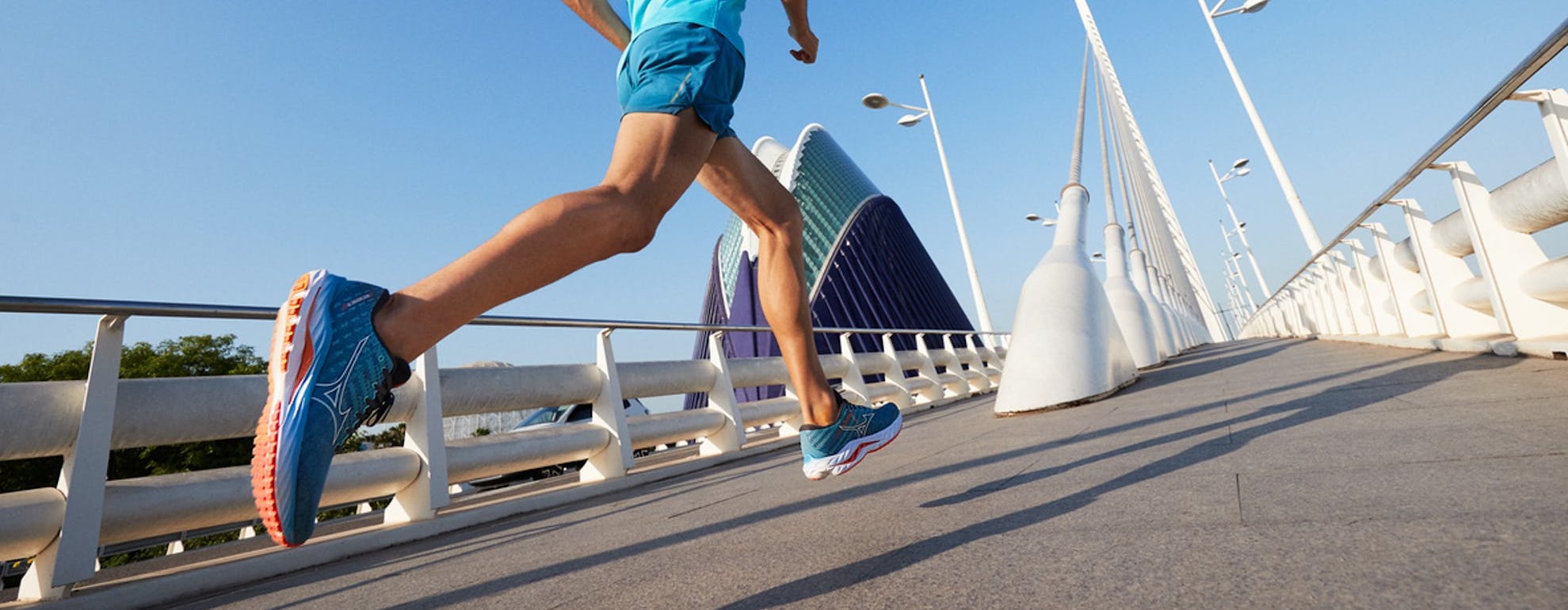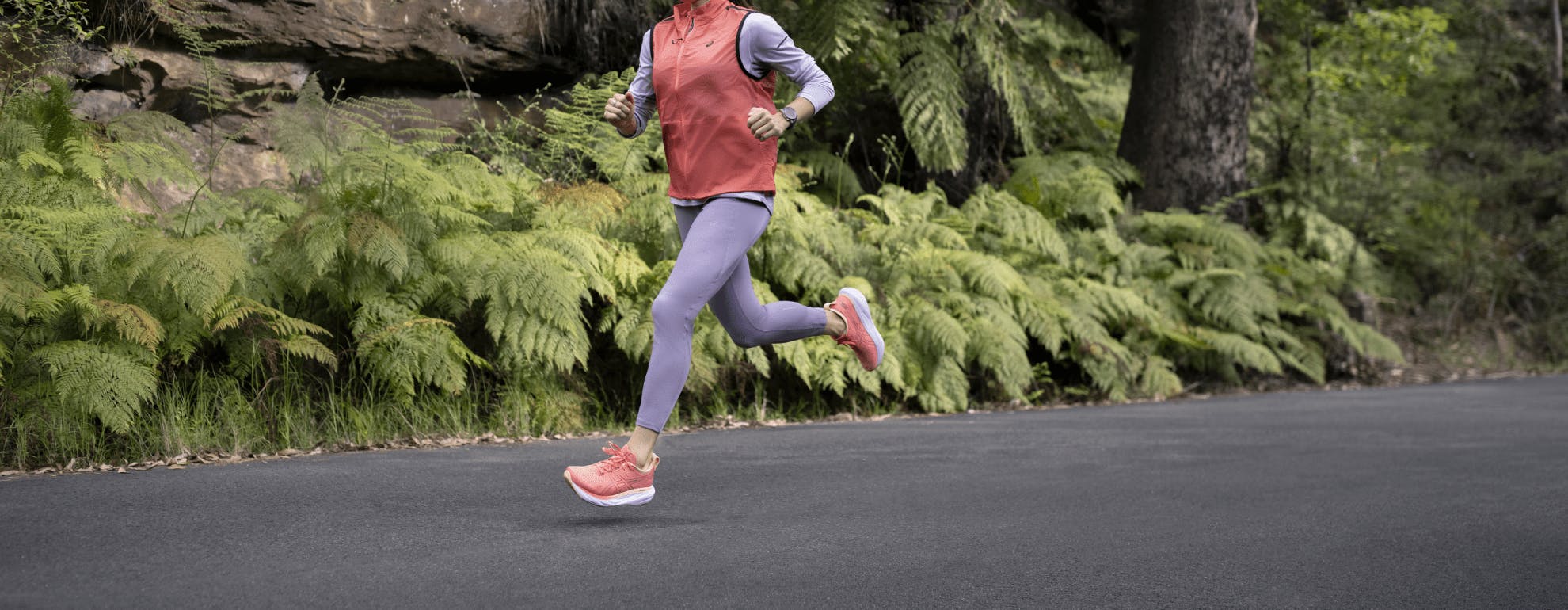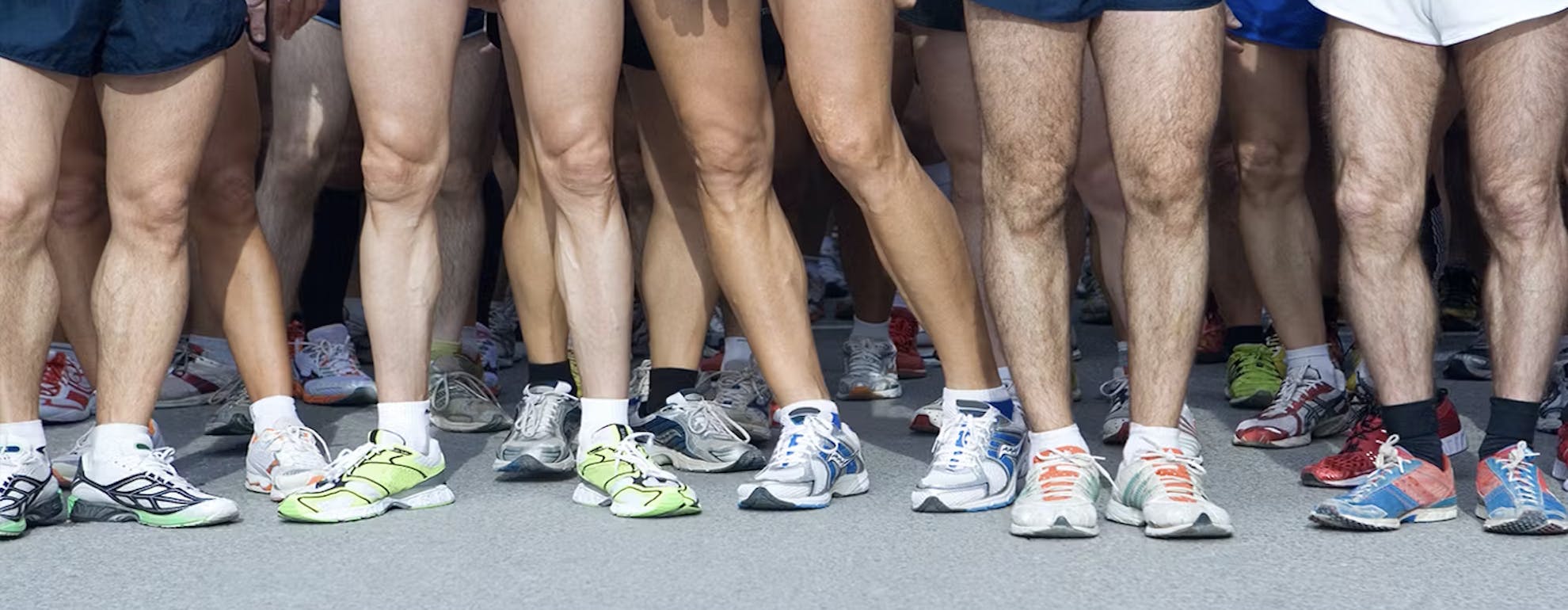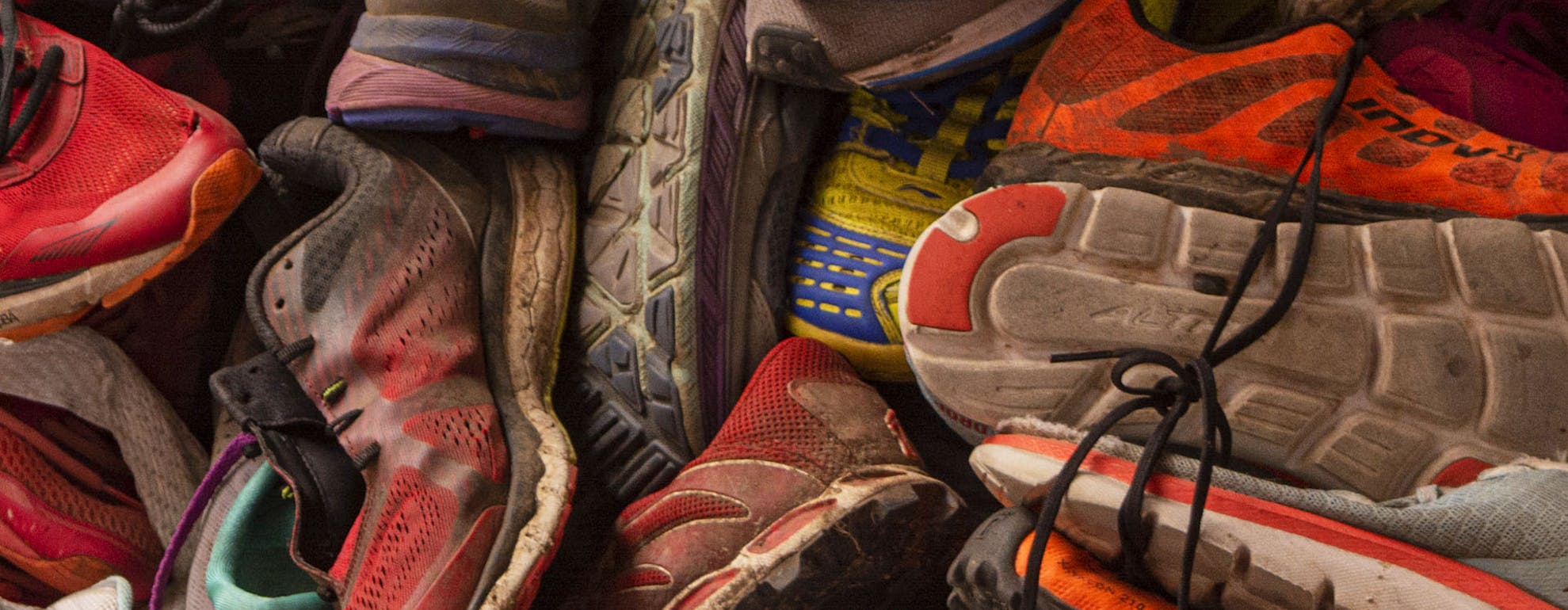
Why & when should you replace your Running Shoes?
Ever wondered when you should replace your running shoes and how many miles can you expect from each pair?
We answer these questions and many more in this handy article;
ㅤ
Why should you replace your running shoes when they are worn out?
Running in worn-out shoes can cause a number of issues, ultimately leading to future injury woes. The following advice will provide you with all the information you need on the subject, such as when and why you should replace your running shoes and how many miles you can expect from each pair.
ㅤ
How do I know if my running shoes are worn out?
Monitor the condition of your shoes on a regular basis. There will be noticeable signs of wear after considerable use and any damage usually becomes visible at pressure points e.g parts of the shoe that take the most impact, especially the outsole and uppers - where your shoe bends and stretches as you run. The grip and tread on your shoes will likely deteriorate the most, and this might happen more on one side of the sole than the other, depending on what kind of runner you are (see below).
Track the mileage of your shoes by using a platform like Strava. You can add your running shoe/s to your personal equipment list via the SETTINGS menu and MY GEAR. Each time you complete a run, select the shoes you have used for that particular activity and the mileage will be automatically recorded and added to a cumulative total. When adding new shoes to your Strava account, don’t forget to set a notification e.g. 500 miles to remind you exactly when your shoes will need to be replaced.
ㅤ
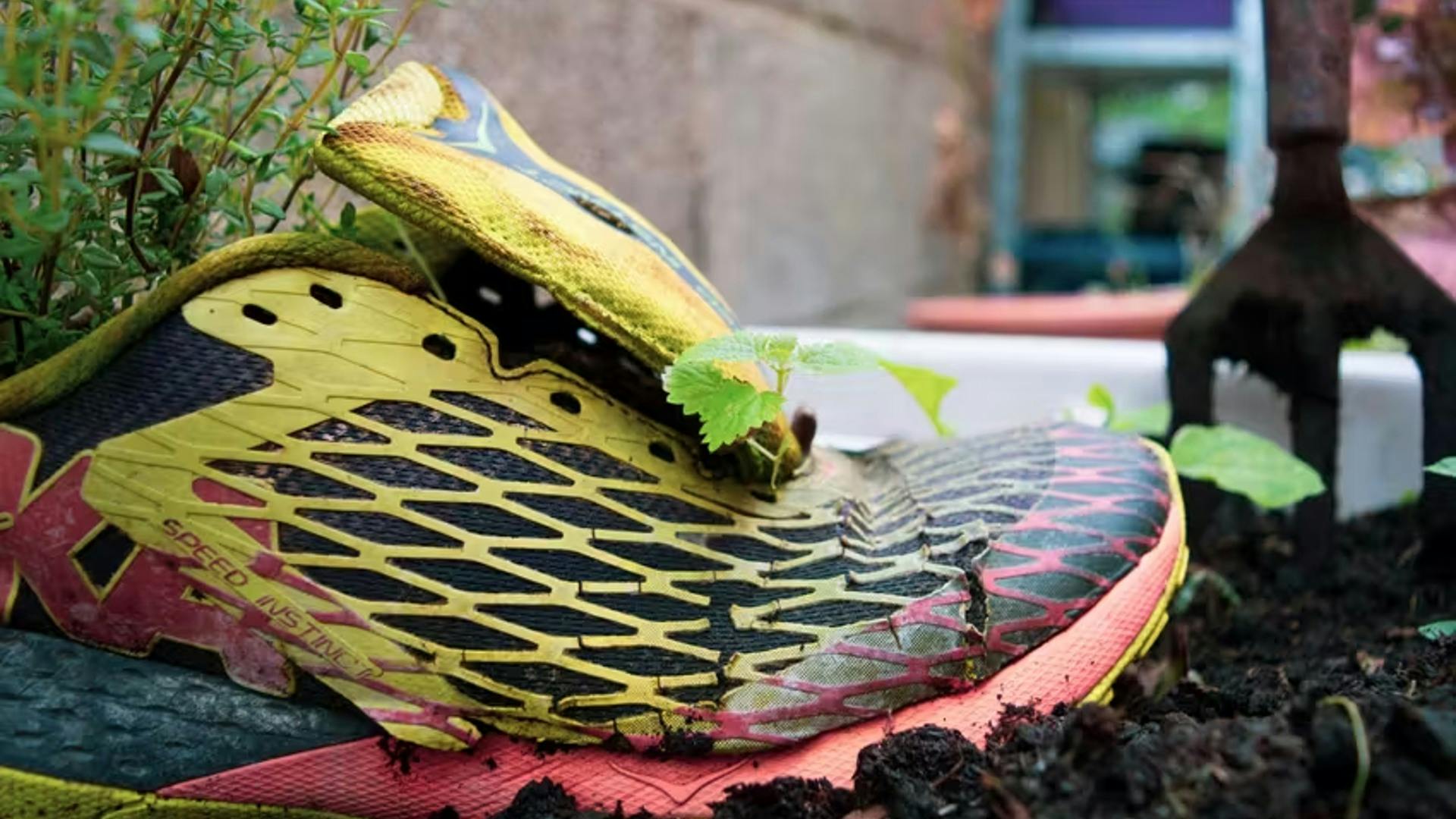
Pictured: One way to repurpose your old shoes. Photo credit to Dan Lawson
ㅤ
How many miles can I expect to get from a pair of running shoes?
Over time materials inevitably start to weaken. Foam will lose cushioning and glue may lose its bond and begin to crumble. And remember that damage to shoes is not always clearly visible. Generally, 300 miles is the minimum you should expect from a shoe and 500 miles is the maximum. After this, you should look at replacing your shoes with a new pair.
ㅤ
How can I prolong the life of my running shoes?
Look after your shoes and treat them with respect, no shoe is indestructible or designed to last forever. Simple things like loosening and untying shoes after use means that you don’t have to force or struggle to get them on your feet the next time you wear them. Using a shoe horn to put them on also protects and prevents damage to the back of the heel. Regularly clean your shoes, but never machine wash or tumble dry. By doing so, you can compromise the materials, causing them to shrink and damage the stitching and glue that bond the materials together. Instead, allow your shoes to dry naturally after a run and then gently clean when dry with a hard brush. If they are particularly dirty after a trail or fell run, wash and brush under a cold water tap and again allow to dry naturally, remembering to keep them a safe distance away from a radiator or heat source. Stuffing your shoes with old newspaper after cleaning will speed up the drying process and help your shoes to keep their shape. As well as soaking up moisture, this method can also help to reduce odour.
ㅤ
Will I get injured if I wear old running shoes?
A majority of running injuries are caused by the repetition of something very minor happening 1000’s of times over the course of a run. This could be caused by more impact getting through the shoe and into your lower limbs, due to the shoe being worn out or not good enough in the first place, or a lack of support allowing your foot to over-pronate on each foot strike, which will drop your ankle then knee and hip out of alignment, leaving you more susceptible to problems. The right running shoe can help avoid these kinds of problems, a worn-out shoe can leave you open to problems.
ㅤ
What should I do with my old running shoes? Can I resuse, donate or recycle them?
There are a number of different ways in which you can reuse or dispose of your old shoes. The first of which is to get creative and repurpose them – why not consider using them outside as a plant pot, herb garden or even as a bird-house?
Click here for more inventive ideas.
Recycling shoes and clothing will become a much easier task as we look towards a greener future. Retailers and brands worldwide are now moving towards a more sustainable and environmentally friendly approach, creating clothing and equipment from ethically sourced and in most cases, fully recyclable materials.
ㅤ

Pictured: JogOn Founder Tony Piedade
ㅤ
Give your old shoes a second chance with JogOn
If your shoes still have plenty of life left in them, we recommend giving them to charity, or better still, donating to a company or organisation who specialise in prolonging the life of old running shoes.
SportsShoes is proud of our national partnership with JogOn, a campaign run by JoggingBuddy founder Tony Piedade aimed at keeping perfectly usable running shoes out of landfill.
You can find out more about JogOn here
Alternatively, you could send your shoes and apparel to ReRun Clothing, a community interest company aimed at prolonging the life of running clothes and equipment, founded and run by Team GB ultra-runner Dan Lawson and his wife and family Charlotte, Lilly and Ruby.
Give your running shoes a second chance. There are millions of people around the world who would benefit from them. So, look in that cupboard, garage, under the bed. They may be old to you, but you could give them another chance with someone else. Let's keep them out of Landfill!
ㅤ

Pictured: The team at ReRun Clothing. Photo credit to Dan Lawson
ㅤ
Which running shoes last the longest?
Will a more expensive shoe last longer? The answer is not really, as the cushioning in most road running shoes is good for about 300-500 miles. A more expensive shoe will just give you better cushioning/protection over those miles than a mid/entry level shoe. Whilst 500 miles sounds a lot, an average of 20 miles per week only gives you roughly 6 months of shoe life. The difficult part, unless you keep a mileage log, is knowing when a shoe is worn out and ready to be replaced. At 500 miles they can still look fine, but it is just the midsole where the cushioning sits that deteriorates, the upper and sole can still look like new. A common complaint from running in worn-out shoes is aching knees or hips, if you have not upped your mileage, but you are starting to feel pain in your knees, then it may be time for a new pair.
ㅤ
Interested in the latest shoes, apparel and technology? Then head over to our Kit & Gear category for more reviews, tips, advice and product releases.
Welcome
Welcome to SportsShoes Kit & Gear Hub! Here you'll find all the information and advice you need about the very latest kit, technology and gear.
Read More
Share this
Featured Articles
View All
